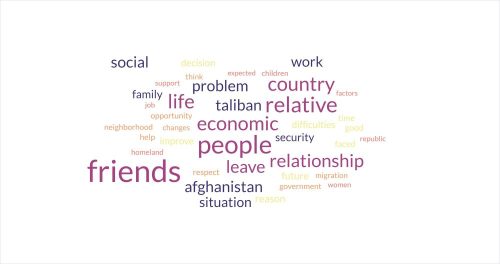This study provides an assessment of the socioeconomic status of the urbanite middle class in Kabul and how they coped with radical institutional changes and persistent economic shocks since the Taliban takeover in August 2021. The study is based on a survey of nearly 300 individuals in Kabul city, who are considered to be part of the educated middle class. The survey was implemented between May and July 2023, and was complemented with in-depth semi-structured interviews with 24 participants.
The results show a significant increase in unemployment over the past two years: 43 percent of the participants in our sample were identified as unemployed as of July 2023, while this rate was only 4 percent in July 2021. The growing trend in unemployment since the political collapse of 2021 is true for both males (up by 31 percentage points) and females (up by 8 percentage points). Employment in the private sector increased by 19 percentage points, whereas it dropped by 7 percentage points in the public sector.
Over the course of the two years from July 2021 to July 2023, the share of households earning a monthly income of less than 25,000 AFN ($287) increased by 60 percentage points, while the shares of those earning higher levels of income have sharply declined. Household debt has also significantly increased. The share of indebted households in our sample increased from 30% in July 2021 to 67% in July 2023, more than doubling over the two years. To make ends meet after losing their sources of income, 15% of sample households were forced to liquidate land, property, and other less valuable assets. The percentage of survey participants finding it ‘frequently’ difficult to meet their monthly expenses have increased by 40 percentage points between 2021 and 2023.
To read more



